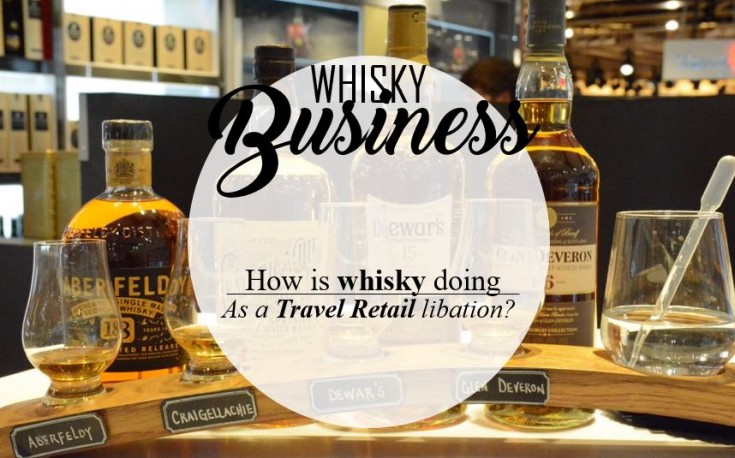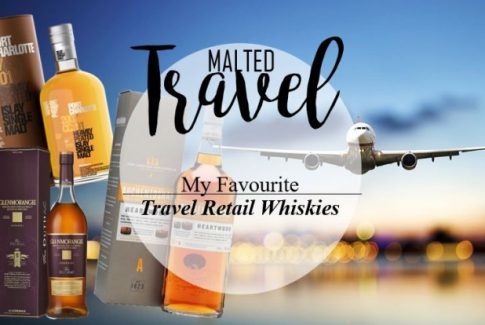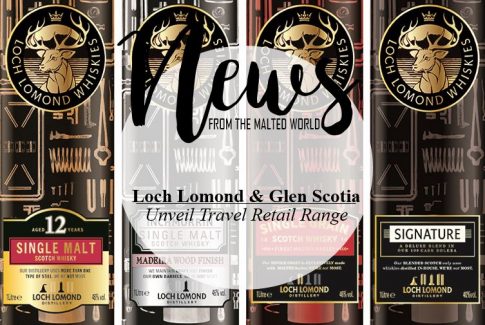
Earlier this month, I was sitting at a table somewhere in London, judging the Drinks International‘ Travel Retail Awards 2016 – when it occured to me that this blog, despite its “traveller” approach, wasn’t much discussing the present and future challenges of whisky in the travel retail sector. Let’s try to rectify this a bit…

Going through all the awards’ categories made me realise – once again – how the whisky sector was very well represented within the travel business. Which is good news, don’t get me wrong! But despite this global presence: how is the sector going? Are whisky brands/producers adapting themselves to today’s challenges and consumers’ needs? What’s next? What should brands be focusing on to be successful on this very specific market?
I asked all those questions to 2 TR experts: André De Almeida, director of Travel Retail at Loch Lomond Group & also blogging on insidethecask.com; and Joe Bates, Travel Retail Correspondent at Drinks International. Let’s see what they have to say…

Pic Source: http://www.dutyfreemagazine.ca/asia/brand-news/liquor/2015/04/24/first-john-dewar-and-sons-fine-whisky-emporium-airport-locations-open/#.V7MsZSjhDIU
How does the TR sector has been adapting to the growing global trend for “craft” spirits, and especially whisky? Have you witnessed any noticeable changes over those past few years in TR whisky consumers’ profiles? How do you explain those changes?
André De Almeida: It should not be a surprise to anyone that in order to succeed, the travel retail sector must continue to provide a differentiated offer to domestic, with a strong value perception to consumers (this value perception is made up of different elements such as price, brand, packaging, provenance, craft, age statement and so on). As a result, consumers gain by having a wider choice and a reason to come back to the store. Although consumer profiles may change over time, such as in the most predominant nationalities in terms of spend for example, they are always looking for discovery through new brands and products, in particular within the single malt whisky category.
The craft trend in general is a representation of the desire of consumers for self-expression and to know more about the provenance and authenticity of the brands and products they consume (in particular within food and drink). The travel retail sector has already started to have this trend reflected in its range offering for craft spirits in selected locations and customers worldwide. Ultimately, whether a brand is deemed as craft or not, the importance of communication to convey the value perception to consumers cannot be under-estimated in order to engage and drive growth.

Joe Bates: The economics of travel-retail mean that it’s generally only the big brands that tend to dominate the duty-free shelves. Smaller craft brands may find themselves listed as regional specialities (Penderyn at Cardiff airport, for instance, Mackmyra at Stockholm Arlanda), but they lack the financial clout and global appeal to gain wider listings.
TR whisky sales in duty-free used to be dominated by middle aged business men. The customer base has broadened widely over the past two decades as the popularity of single malt whiskies has grown. Many younger millennials are now ‘into’ whisky whereas in the 1990s it was vodka that was the in-spirit.

Pic Source: http://uk.worlddutyfree.com/uks_en/terminal-glasgow-75.html
How do you see the TR whisky sector in 5/10 years time?
André De Almeida: I expect the global demand and desire for the whisky sector in travel retail to continue to grow at a global level over the next 5/10 years, especially as the macro factors affecting the channel are expected to remain favourable in the medium to long term (such as increasing population numbers; lower barrier to entry with reduction in the average cost to travel; increasing number of consumers worldwide having a higher disposable income). This despite some of the short term challenges we face today in travel retail: terrorism; natural disasters; economic issues and so on which inevitably will have impacted in the areas affected such as North Africa, Turkey, Russia, LatAm, etc.
However, I believe that the future continues to be bright as Scotch whisky is viewed very positively across the world, whether as a status symbol, a drink for celebration or as part of the growing cocktail culture.

Joe Bates: It will continue to grow as a proportion of overall spirit sales in duty-free. I expect to see single malt whisky continued to grow at the expense of blends. There will be more success too for world whiskies in duty-free, especially Japanese whiskies as more stocks become available.

What, according to you, are the current key trends in TR whisky expressions? (NAS, premium, bespoke designs?)
André De Almeida: It is a fact that there is a continued shift for further differentiation in travel retail by whisky brands in relation to domestic markets. Some of this has manifested itself through the introduction of NAS travel retail exclusive products and product ranges. The increase in the amount of premium offerings and bespoke designs is understandable also given the growth seen in premium deluxe blends category and also the single malts category, driving value ahead of volume.
The main challenge will be on value over the medium term if the supply of liquid driven by increasing capacity in the industry (new distilleries planned and extension of existing distilleries) outstrips the growing demand.

Joe Bates: With a few exceptions the trend is towards NAS duty-free exclusives. Gift packaging, personalised bottles also popular.

Pic Source: http://www.dutyfreemagazine.ca/americas/brand-news/liquor/2016/06/28/william-grant-launches-virtual-reality-distillery-tour-in-paris/#.V7MtjCjhDIU
Do you think the consumer experience within airport whisky shops & bars is now as important as the products themselves? If yes, could you give us some examples of your favourite brand initiatives?
André De Almeida: The consumer experience within airports has always been a fundamental part of the travel retail proposition for brands as one of the key objectives for most is to expose their brand ‘essence’ to an international consumer base. The product and packaging on shelf can only provide a limited amount of communication to the consumer, especially also as tastings are not always possible. The ‘essence’ of brands is typically brought to life through the use of different tools such as HPBAs (high profile branded activations) and outside of the whisky category, one of the best examples of this is Hendrick’s Gin. I can recall the Hendrick’s G.O.S.H. (Gin Oscillating Sensory Helmet) machine as a piece of HPBA that worked very well with consumers and created lots of engagement a few years ago. (see press link: http://www.moodiedavittreport.com/hendricks-gin-creates-theatre-with-science-experiment-in-hamburg/ and more importantly check the video: https://www.youtube.com/watch?v=ZO3wNvsQPaQ&feature=youtu.be )
However more recently I have seen some great examples of HPBA activations from Jameson’s (for reference http://www.moodiedavittreport.com/pernod-ricard-hails-success-jameson-beoriginal360-campaign/ ), Tullamore DEW in Dublin airport, Glenfiddich in Paris CDG airport (for reference: http://www.moodiedavittreport.com/william-grant-launches-glenfiddich-distillery-tour-at-paris-cdg/ ), to name a few.

Joe Bates: I wouldn’t say it is as important but it is growing in importance. Virtual reality tours of distilleries, social media integrated competitions, guided tastings and bespoke cocktails – all routine these days…

Pic Source: http://www.whiskyintelligence.com/2011/08/showcase-airport-store-boosts-sales-of-irish-whiskey-irish-whiskey-news/
In the future, what do you think whisky distributors/producers should be more focused on to increase TR sales and brand awareness?
André De Almeida: In future, the main area for development to improve the consumer experience and also to improve the commercial performance must be a closer working relationship between the Trinity of the operator (e.g. the airport); the retailer and the brand owner.
Joe Bates: Keep on in investing in innovation and the quality of the liquid not just packaging. Any moves towards exclusivity and understanding the needs of travellers (i.e. smaller bottle sizes and even PET bottles might work for cheaper varieties)







